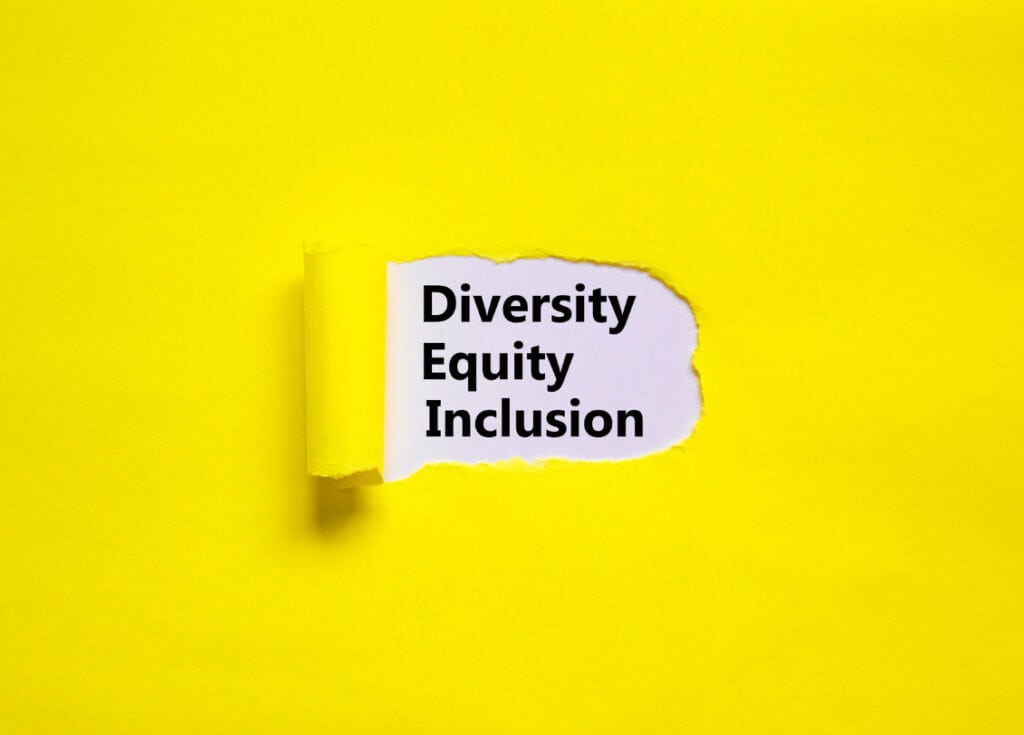Ever felt like your workplace could be more inclusive? Or maybe you’ve noticed a lack of diverse perspectives in decision-making? Many organizations struggle with creating a truly inclusive environment where everyone feels valued.
Table of Contents
76% of people consider diversity a key element when looking for a job. Diversity, equity, and inclusion, or DEI, training is a key part of making sure that everyone feels like a part of the team. That they feel valued and supported.
Companies who put in the time and effort into DEI initiatives, you show your employees that you want to work to break down biases and build a culture of acceptance and understanding.

A mix of perspectives leads to better problem-solving and smarter decisions. Effective DEI training shows you how to turn these differences into strengths. As a team, you can create a work environment where unique insights spark new ideas and boost efficiency.
This article dives into why DEI training is essential for tackling these issues and building a workplace where diversity thrives.

Establishing the Groundwork
Before diving in, let’s get a grip on what DEI means, why DEI training is beneficial, and the core principles that make it work.
Defining DEI
Diversity, Equity, and Inclusion (DEI) are three interconnected components:
Diversity: Recognizing and valuing the varied experiences and perspectives individuals bring.
Equity: Ensuring fair treatment and advancement opportunities for everyone.
Inclusion: Creating environments where diverse individuals feel welcomed and can contribute fully.
Benefits of DEI Training
Investing time in DEI training can transform your workplace. Here are some key benefits:
Improved Decision-Making
Teams with diverse members can draw from a rich pool of experiences, leading to better decisions.
Increased Innovation
Diversity of thought leads to creative problem-solving and innovation.
Enhanced Employee Engagement
An inclusive culture fosters a sense of belonging, boosting morale and productivity.
Key Principles of DEI
To effectively integrate DEI into your workplace, keep these principles in mind:
Active Listening
Acknowledge and value the unique experiences of others to foster an inclusive environment.
Continuous Learning
DEI is an ongoing journey. Embrace continuous education.
Accountability
Set clear DEI goals and measure progress to ensure training leads to real change.
DEI Training in Action
Let’s look at the concrete steps your organization can take to promote diversity through DEI training, from building the curriculum to measuring its impact.
Curriculum Development
When crafting a DEI training curriculum, it’s essential to tailor it to your organization’s specific needs. Include real-world scenarios that reflect the diversity challenges your employees might encounter. This makes the training relevant and useful in daily operations.
Implementation Strategies
Effective DEI training considers different learning styles and scheduling needs. Use a mix of in-person workshops and online modules for a blended learning experience. Include activities that encourage active participation to keep everyone engaged.
Leadership involvement is crucial too—it shows that the training is a priority. To truly foster diversity, your recruitment strategies should align with DEI principles. Use diverse recruiting methods to tap into various talent pools, reflecting the inclusive culture you’re building.
Training for Leaders
Leaders play a crucial role in the success of DEI initiatives. DEI training for leaders focuses on equipping them with the skills and knowledge needed to model inclusive behavior and drive cultural change within the organization.
DEI training for leaders touches on:
- Leading by example
- Actively listening and empathy
- Inclusive decision making
- Accountability and transparency
- Mentorship and advocacy
Impact Assessment
To see how well your DEI initiatives are working, you need to assess their impact. Use surveys to gather quantitative data on employee sentiment and collect qualitative feedback for deeper insights. This data-driven approach helps you continuously improve your DEI efforts.
Challenges and Solutions
Embracing DEI training is a powerful move towards fostering an inclusive workplace, but it comes with its hurdles. Let’s explore how to navigate these challenges effectively to ensure DEI is more than just a buzzword at your organization.
Overcoming Resistance
Resistance often comes from a lack of awareness or fear of change. Employees might see DEI as just another box to tick if they don’t grasp its importance. Hold open forums for discussion where concerns can be voiced and addressed.
Educational sessions can help clarify that DEI benefits everyone, not just minority groups. Leaders should practice what they preach when it comes to DEI principles. Their visible support for DEI training can encourage others to follow suit.
Tailoring to the Organization
Every workplace has its own unique culture and challenges, so DEI training can’t be one-size-fits-all. Use custom surveys and workshops to identify specific issues within your organization and tailor your DEI training accordingly.
DEI is an ongoing process. Keep the conversation alive by regularly reviewing and updating DEI strategies to ensure they stay relevant to your organization’s culture.

Future Prospects
In the fast-paced world of work, DEI training is a stepping stone toward a continuous evolution in workplace culture. Let’s explore how this journey unfolds as we move forward.
Sustaining Progress
Organizations will conduct annual or bi-annual DEI assessments to measure progress against benchmarks and ensure continuous improvement.
Progress Metrics
- Employee Surveys: Regular feedback to gauge employee sentiment and identify areas for improvement.
- Promotion and Hiring Statistics: Tracking these numbers helps ensure fair practices.
- Inclusive Policies: Look for policies beyond hiring practices, like flexible working hours and employee resource groups, designed to support a diverse workforce and sustain long-term inclusivity.
Emerging Trends in DEI
Innovative Training Programs
Expect to see more virtual reality (VR) and gamification in DEI training. These technologies offer immersive, real-world scenarios, making learning more engaging and effective.
Data-Driven Strategies
Advancements in technology will see organizations leveraging big data analytics to uncover biases and tailor DEI initiatives more effectively.
Example of Data Utilization: Analyzing the language used in job descriptions to attract a diverse applicant pool.
By keeping an eye on these future trends, your workplace can stay ahead of the curve in fostering a truly diverse and inclusive environment.
DEI Training Is Essential
Embracing DEI training is more than just a corporate trend—it’s a fundamental step towards creating a workplace where everyone feels valued and included.
From understanding the basics of DEI to implementing effective strategies and overcoming challenges, this journey requires continuous effort and commitment. Regular assessments, innovative training methods, and data-driven approaches ensure that your DEI initiatives remain relevant and impactful.
By fostering a diverse and inclusive environment, you’ll not only improve decision-making and boost innovation but also enhance employee engagement and satisfaction. Staying ahead of emerging trends and tailoring your strategies to your unique organizational culture will keep the momentum going.
In the end, DEI training is an ongoing evolution, one that promises a more dynamic, creative, and harmonious workplace. So, take the leap, invest in DEI, and watch your organization thrive.



